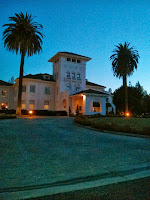Creating Minds an Anatomy of Creativity Seen through
the Lives of Freud, Picasso, Stravinsky, Eliot, Graham and Gandhi by Dr. Howard
Gardner delves into the personal lives of some of the world’s greatest geniuses
and their chaotic development into full productivity. Dr. Howard Gardner is a developmental
psychologist and Professor of Cognition and Education at Harvard. He is best
known for his ground breaking work on the Theory of Multiple Intelligences.
Gardner’s Theory of Multiple Intelligences indicates
that people have different processes for learning and developing. Schools often
rely on only a few methods leaving many geniuses out of the academic arena.
These arenas of learning are in the linguistic, logic-mathematical, musical,
spatial, bodily/kinesthetic, interpersonal, intrapersonal, and naturalistic. At present he is also considering an
additional intelligence called existential intelligence which is the “consideration
of big questions”.
Within the book he looks deeply into the lives of
seven creative geniuses in order to come to some conclusions. His review
includes Picasso’s visual-spatial intelligence and the transcended interpretive
frames of reference that he uses to change human perception of issues. He
argues that each person has taken a Faustian bargain whereby they have put some
aspects of their lives on hold as they went upon their personal missions that
have led to profound breakthroughs.
Each person has a set of tensions and asynchronous
in development that when are not overwhelming lead the creative mind and new
perceptions of life. Creators come from financially sound, but not necessarily
wealthy families, and have a touch of estrangement from biological members. They
hold certain values as important and work within fields a decade or more before
making a major breakthrough. As they age their creative works become less even
though their followership rises.
The creative genius has certain intellectual
strengths as they relate to the eight intelligence possibilities. Many of these
geniuses were late bloomers who started their callings in their late twenties
and thirties. Only a few were known as prodigies and this is based upon the
support of their family and early recognition of skills. They are
self-confident individuals who often self-promote and can have difficulties
with others who are not considered as intelligent.
Many geniuses came from homes where strictness and
excellence were required. Yet when they gained enough skills the genius rebelled
against their family and loosened the noose of control. They worked in areas of
fields others have either discarded or completely didn’t understand. They seek
to create their own domain in their chosen fields. They were productive each day and worked on
their craft or other complementary crafts to master skills. They were involved
in each of the five distinct activities:
- 1.) Solving a particular problem.
- 2.) Putting forth a general conceptual scheme.
- 3.) Creating a product.
- 4.) A stylized performance
- 5.) A performance for high stakes
Each genius works within a triangle of creativity.
This triangle includes the domain, the field and the individual. The domain is
the knowledge, the field is the audience, and the individual is the creative
person. They balance and move through these fields in different ways in order
to find their creative breakthrough. It is the field that must accept that
breakthrough as important.
If you are seeking a book that discussed the nature
of genius and the overall development of major scientific and artistic
breakthroughs this is likely to be the one for you. You will find that
intelligence mixed with the environment creates in part the genius. The book
doesn’t state this but each of these individuals seem to have developed in
times of international conflict as related to the world wars and other societal
rubs. Perhaps this is a background factor
whereby society feels pressure to change and adapt and the genius is more
capable emotionally, psychologically, and biologically to head the call.
Perhaps it is a call to greatness?
Gardner, H. (2011). Creating Minds an Anatomy of Creativity Seen through the Lives of
Freud, Picasso, Stravinsky, Eliot, Graham and Gandhi. New York: Basic
Books.










